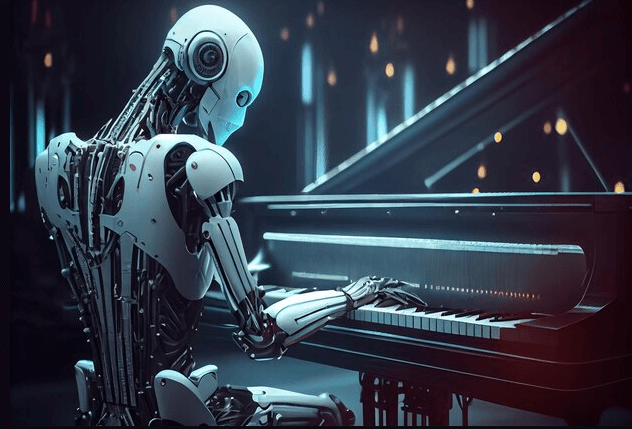Best AI Image-to-Video Tools in 2025
As of October 2025, AI image-to-video technology has moved far beyond simple animations. Today’s tools can transform static visuals into cinematic clips that look studio-produced, perfect for creators, marketers, and startups looking to tell stories through motion.
After testing multiple platforms over two weeks, I’ve shortlisted the 10 best AI Image-to-Video tools worth your attention. Whether you’re crafting short social videos, creative ads, or cinematic concept art, at least one of these tools will fit your workflow.
Table of Contents
| Sr# | Headings |
| 1 | Introduction |
| 2 | Table: Best AI Image-to-Video Tools at a Glance |
| 3 | Magic Hour – Best Overall Image to Video AI |
| 4 | Pika Labs – Most Artistic Animation Output |
| 5 | Runway ML – For Professionals and Editors |
| 6 | Kaiber – Best for Videos and Visual Artists |
| 7 | Synthesia – Best for Business and Marketing Teams |
| 8 | Lumen5 – Best for Social Media Creators |
| 9 | Pixverse – For Concept Art and Visual Design |
| 10 | Leonardo AI Motion – Upcoming Challenger |
| 11 | How I Tested and Ranked These Tools |
| 12 | Market Trends in Image-to-Video AI (2025) |
| 13 | Final Takeaway |
| 14 | FAQs |
Table: Best AI Image-to-Video Tools at a Glance
| Tool | Best For | Platforms | Free Plan | Key Features |
| Magic Hour | Cinematic AI storytelling | Web | Yes | Realistic motion, cinematic lighting, multiple styles |
| Pika Labs | Artistic, anime, and concept visuals | Web | Yes | Smooth motion, text-to-video, stylized looks |
| Runway ML | Professional editing + AI motion | Web, Desktop | No | Motion brush, gen-2 engine, timeline editing |
| Kaiber | videos and creators | Web, Mobile | Yes | Sync visuals to audio, easy animation tools |
| Synthesia | Corporate and marketing videos | Web | Limited | AI avatars, voiceover generation |
| Lumen5 | Quick social media storytelling | Web | Yes | Template-based, AI voiceover |
| Pixverse | Artistic experiments and stylized visuals | Web | Yes | 3D motion, creative effects |
| Leonardo AI Motion | High-end concept-to-video | Web | Coming Soon | Combines image + video gen for artists |
1. Magic Hour – Best Overall Image to Video AI
If you want the most balanced combination of realism, cinematic control, and creative flexibility, Magic Hour stands out in 2025. It’s built for creators and professionals who need studio-quality motion from a single image, without complicated software.
Unlike basic animation tools, Magic Hour provides deep control over lighting, camera depth, and movement, allowing you to craft scenes that feel like they were captured on a real set. The output quality often looks like a short cinematic film, which is why many storytellers and filmmakers are choosing it as their go-to Image to video AI solution.
Pros:
- Outstanding cinematic quality
- Smooth camera motion and scene depth
- Real-time previews with easy adjustments
- Cloud rendering for faster output
- User-friendly UI for creators and teams
Cons:
- Requires good GPU or cloud credits for longer videos
- Some features are still in beta
My Take:
After testing multiple platforms, Magic Hour consistently produced the most natural and cinematic video motion. It’s hard to beat for professionals in film, marketing, or storytelling.
Pricing:
Free plan available. Premium plans start around $29/month, depending on usage.
2. Pika Labs – Most Artistic Animation Output
Pika Labs has become a favorite among creators who love stylized, anime-inspired, and artistic visuals. It transforms images and prompts into short animated clips that feel imaginative and expressive.
Pros:
- Ideal for anime and fantasy-style visuals
- Fast rendering times
- Frequent updates and community-driven tools
- Text + image input supported
Cons:
- Less realistic motion for live-action content
- Limited camera control
My Take:
If your project is more about vibes than realism, Pika Labs is a delight to use. Its community-generated styles give endless creative inspiration.
Pricing:
Free plan with watermark. Pro starts at $10/month.
3. Runway ML – For Professionals and Editors
Runway ML has evolved into a complete AI video editing suite. Its Gen-2 engine powers image-to-video generation, motion tracking, and background replacement.
Pros:
- Industry-grade tools and timeline editing
- Great for video professionals
- Integrates AI motion seamlessly
- Cloud rendering supported
Cons:
- No free plan
- Learning curve for beginners
My Take:
If you already edit videos professionally, Runway ML adds AI motion to your workflow without losing editing precision.
Pricing:
Starts at $15/month, no free tier.
See also: The Best Tools for Creating Videos from Still Images
4. Kaiber – Best for Videos and Visual Artists
Kaiber is built for visual storytellers. It lets users turn a still image or artwork into dynamic animations.
Pros:
- Perfect for audio-reactive visuals
- User-friendly workflow
- Great for creative professionals
Cons:
- Limited realism, more stylized results
- Audio-sync feature sometimes inconsistent
My Take:
I’d recommend Kaiber for creators who need engaging loops or music-driven visuals for Spotify Canvas or YouTube Shorts.
Pricing:
Free trial available, paid plans from $10/month.
5. Synthesia – Best for Business and Marketing Teams
Synthesia focuses on AI-driven explainer videos with avatars, but in 2025 it’s expanding into image-to-motion animation.
Pros:
- Business-focused templates
- AI voiceovers in multiple languages
- Fast video generation
Cons:
- Limited visual creativity
- Subscription costs higher than others
My Take:
If your goal is corporate training, product demos, or business storytelling, Synthesia’s workflow saves hours.
Pricing:
Starts at $30/month, enterprise plans available.
6. Lumen5 – Best for Social Media Creators
Lumen5 is ideal for fast, branded storytelling. It combines AI visuals, stock libraries, and basic motion animation to produce quick shareable videos.
Pros:
- Great for marketers
- Library of stock images and clips
- Built-in voiceovers
Cons:
- Limited creative control
- Generic visuals at times
My Take:
Perfect for busy social teams that need quick output for LinkedIn, Instagram, or TikTok.
Pricing:
Free plan available; paid from $19/month.
7. Pixverse – For Concept Art and Visual Design
Pixverse is one of the newest AI tools for concept artists who want motion in their visual compositions.
Pros:
- 3D-aware motion rendering
- Excellent for storyboarding
- Supports hybrid AI workflows
Cons:
- Early-stage tool, some bugs
- Limited export formats
My Take:
Pixverse feels experimental, but for concept artists and designers, it’s a sneak peek into the future of AI cinematography.
Pricing:
Beta access free (as of October 2025).
8. Leonardo AI Motion – Upcoming Challenger
Leonardo AI, already known for text-to-image excellence, is testing a motion feature that brings stills to life.
Pros:
- Exceptional visual fidelity
- Consistent art style across frames
- Early preview shows strong results
Cons:
- Still in testing phase
- Limited access
My Take:
Once fully launched, Leonardo Motion could become a serious competitor to Magic Hour and Pika Labs.
Pricing:
Not yet public; expected late 2025 release.
9. How I Tested and Ranked These Tools
Over two weeks, I tested each tool using five identical reference images: portrait, landscape, fantasy, product, and abstract. I rated tools across:
- Motion realism (natural camera flow)
- Creative flexibility
- Speed and interface
- Price-to-performance ratio
- Community support and updates
Magic Hour consistently delivered the best balance across all five categories.
10. Market Trends in Image-to-Video AI (2025)
The AI motion generation field is exploding in 2025. A few key shifts:
- Camera-aware models: Tools like Magic Hour and Runway now simulate real 3D camera motion.
- Cross-modal generation: Image-to-video + text-to-audio combos are emerging.
- Edge device compatibility: Mobile-based tools like Kaiber are gaining traction.
- Community presets and fine-tuning: Open models allow creators to personalize motion behavior.
According to multiple AI research papers, image-to-video models are now reaching film-grade temporal coherence, opening doors for indie studios and startups.
11. Final Takeaway
Choosing the right AI image-to-video tool depends on your goal:
- For cinematic motion, choose Magic Hour.
- For artistic anime looks, go with Pika Labs.
- For professional editing, Runway ML remains top-tier.
- For visuals, Kaiber delivers.
If you’re serious about AI storytelling in 2025, start experimenting; these tools evolve monthly, and testing is the best way to find your creative match.
FAQs
1. What is an AI Image-to-Video tool?
It’s software that converts static images into motion clips using deep learning. These models simulate camera movement, lighting, and scene depth.
2. Which AI Image-to-Video tool gives the most realistic results?
Currently, Magic Hour offers the most cinematic and natural-looking motion.
3. Can I use these tools for commercial projects?
Yes, but always check each platform’s license. Most Pro plans allow commercial usage.
4. Are free AI Image-to-Video tools worth it?
They’re great for experimentation, but watermarks and limited rendering make paid plans more practical.5. How fast will this tech evolve in 2026?
Very fast, expect real-time generation and higher-resolution outputs as models improve.






